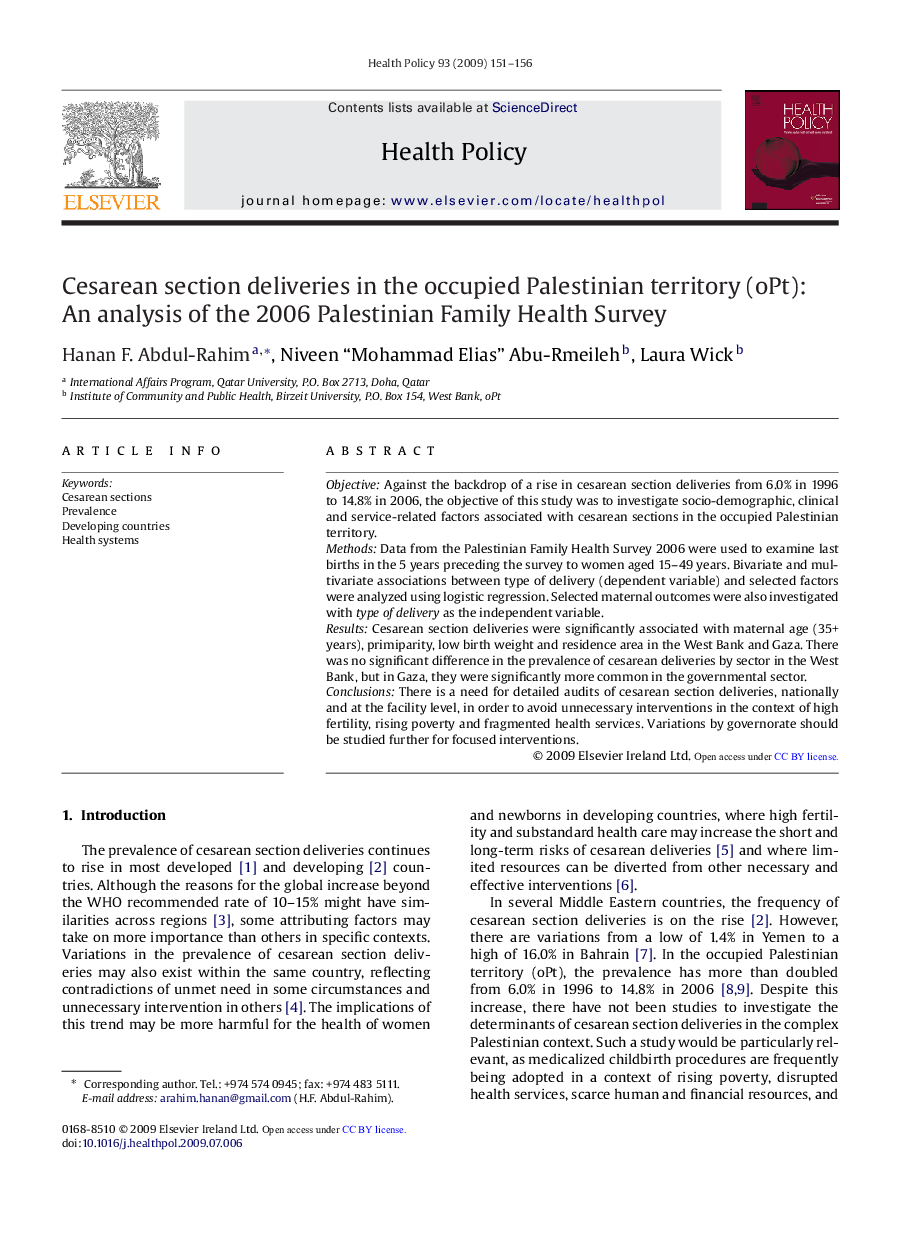| Article ID | Journal | Published Year | Pages | File Type |
|---|---|---|---|---|
| 6240209 | Health Policy | 2009 | 6 Pages |
ObjectiveAgainst the backdrop of a rise in cesarean section deliveries from 6.0% in 1996 to 14.8% in 2006, the objective of this study was to investigate socio-demographic, clinical and service-related factors associated with cesarean sections in the occupied Palestinian territory.MethodsData from the Palestinian Family Health Survey 2006 were used to examine last births in the 5 years preceding the survey to women aged 15-49 years. Bivariate and multivariate associations between type of delivery (dependent variable) and selected factors were analyzed using logistic regression. Selected maternal outcomes were also investigated with type of delivery as the independent variable.ResultsCesarean section deliveries were significantly associated with maternal age (35+ years), primiparity, low birth weight and residence area in the West Bank and Gaza. There was no significant difference in the prevalence of cesarean deliveries by sector in the West Bank, but in Gaza, they were significantly more common in the governmental sector.ConclusionsThere is a need for detailed audits of cesarean section deliveries, nationally and at the facility level, in order to avoid unnecessary interventions in the context of high fertility, rising poverty and fragmented health services. Variations by governorate should be studied further for focused interventions.
